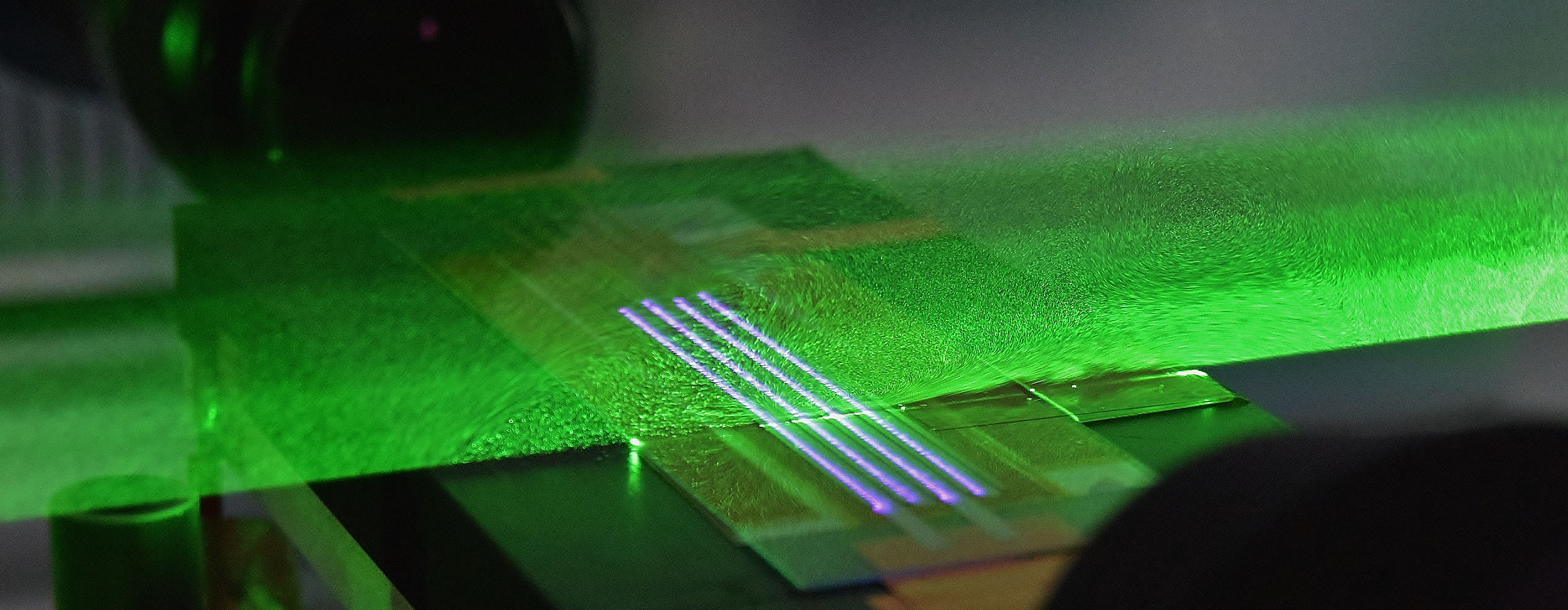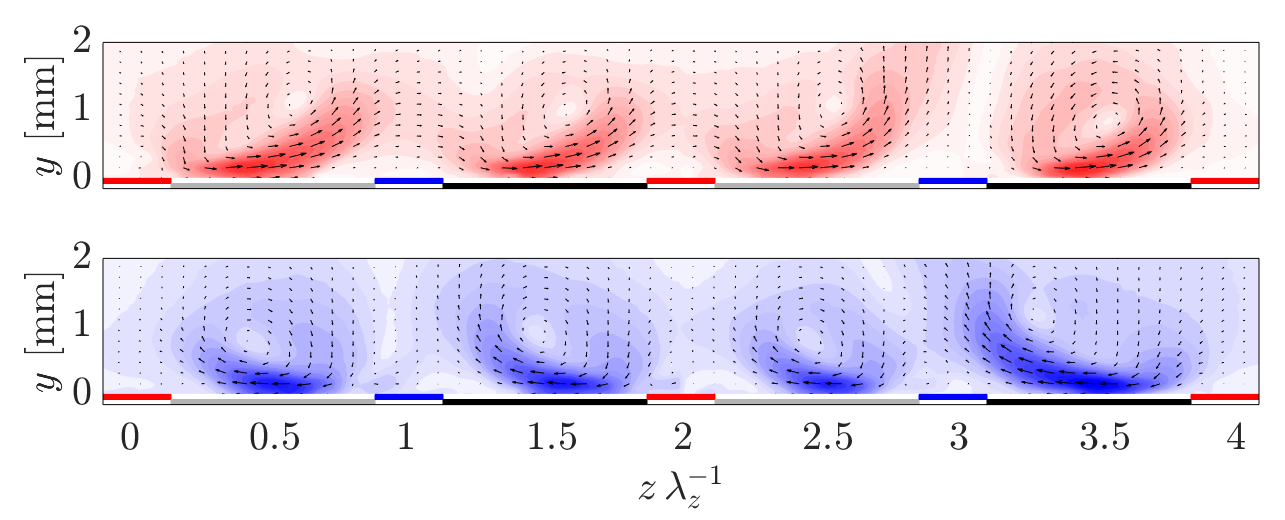Alternate-current dielectric-barrier-discharge (AC-DBD) plasma actuators, as a main mechanism, impart wall-parallel momentum to the environment by ionization of air molecules. This characteristic turned out to be advantageous in flow-control, addressing skin-friction drag reduction, hence a decrease in emissions for aerodynamic vehicles.
In turbulent flows both streamwise travelling waves of spanwise wall velocity (Quadrio et al., 2009, JFM) and spanwise wall oscillations (Quadrio & Ricco, 2004, JFM) have demonstrated to be capable of reducing drag by up to 40 %. The spanwise oscillating wall relies on a periodic fluid motion transverse to the mean-flow direction, generating a so-called Stokes-layer. In experiments, this was formerly achieved by mechanically displacing a wall, tested in the wind-tunnel facility of ISTM that is dedicated for accurate skin-friction measurements in airflow (Gatti et al., 2015, Exp. Fluids). In the past years, two plasma actuator concepts were evaluated which are capable of exciting flow oscillation in the spanwise direction (see figure 1).
 |
 |
Figure 1: (Left) Plasma actuator array in operation and (right) velocity fields in a cross-plane for two opposing phase angles of the oscillation.
The elaborated actuator concepts for spanwise oscillation will be further tested to analyse the flow manipulation in quiescent and non-quiescent air conditions. Therefore, the electric power consumption is studied together with the spatio-temporal structure of plasma discharges and the according momentum impact on the flow. Latter considerations require the application of novel laser-based flow measurement techniques which offer a high spatial resolution.
Additionally, numerical models for the plasma actuators are developed and validated by means of measurement data. The numerical flow simulations can facilitate parametric studies of the plasma actuator concepts to complement the experimental investigations.
